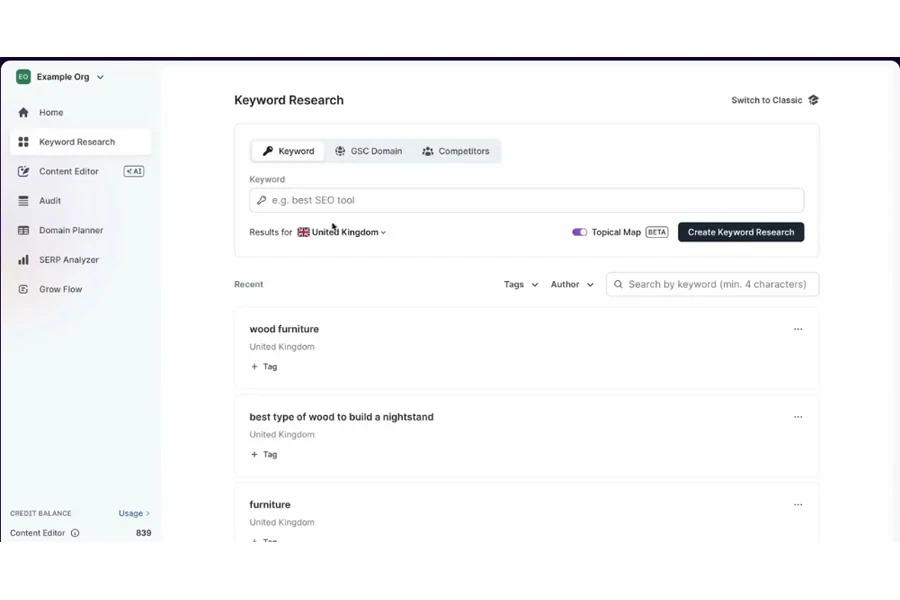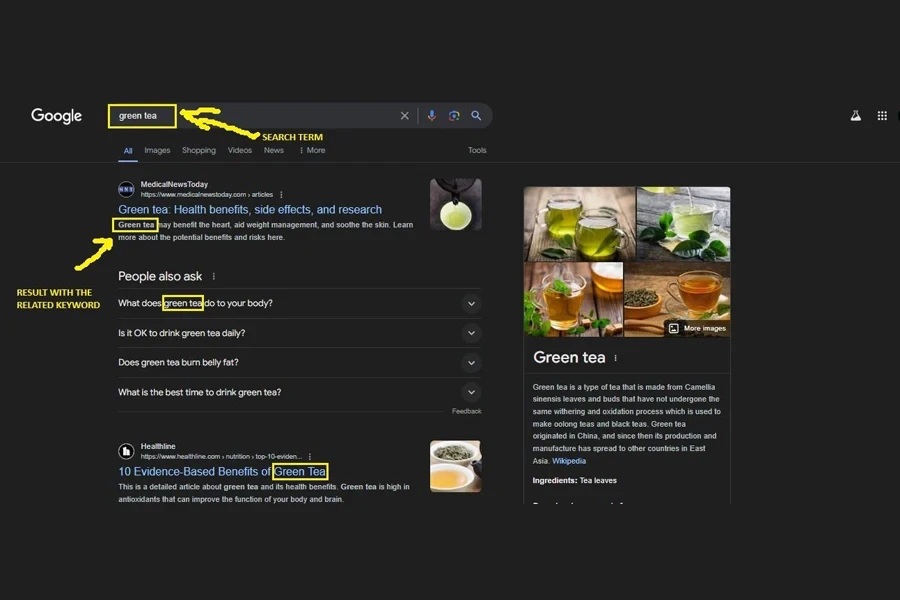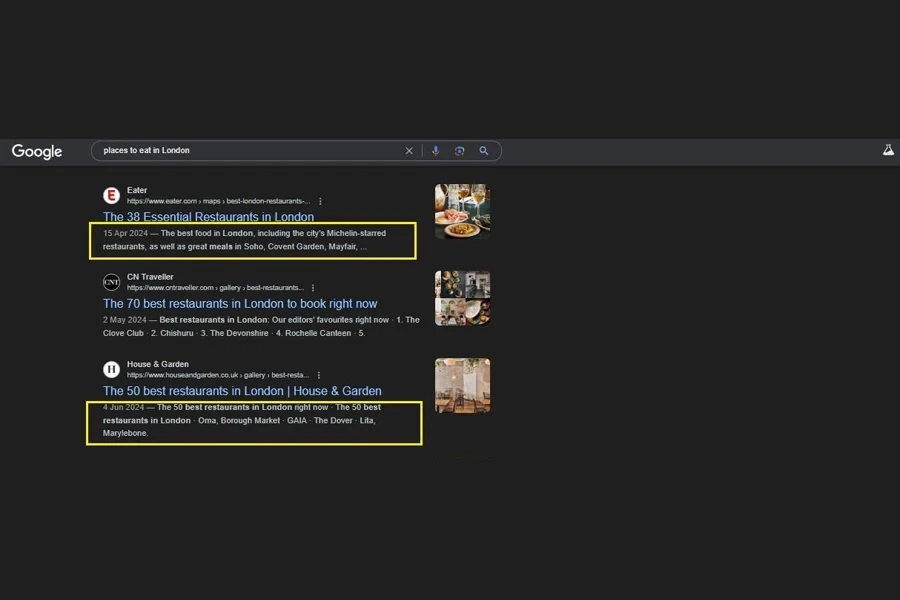Google handles over 3.5 billion searches daily, and up to 80% of all trackable website traffic comes from search engines. No wonder research shows that 82% of marketers report a positive effect on brand goals from SEO. SEO is great for inbound marketing and for a good reason.
When businesses optimize their web content to communicate well with search engines, the algorithm will reward them with higher chances to rank for specific keywords. But how can brands optimize their sites for SEO? Here’s an SEO checklist to help retailers maximize everything from blogs to online stores.
Table of Contents
The complete SEO checklist: everything businesses should do to rank high
Rounding up
The complete SEO checklist: everything businesses should do to rank high
Businesses must rank high on SERPs to rake in that juicy performance. And while it may take some time (maybe even months), even new websites can rank on search engines by following this checklist:
The basic SEO checklist
1. Use Google’s search console
There’s nothing better than a free tool to help businesses get started. And in this case, Google Search Console is the top choice. It allows websites to track incoming traffic, identify issues with rankings, and monitor search performance. Brands can start by signing up for free and verifying their domain so Google can confirm ownership before offering its services.
2. Leverage Bing’s webmaster tools
Just because Google is the largest search engine doesn’t mean businesses should ignore others. The second-largest, Bing, handles up to 15% of all searches in the United States—making it impressive enough to deserve attention. Like Google, Bing also offers a free Webmaster tool that allows brands to add their sites to the crawler. Sign up to create a free Bing Webmaster account and verify website ownership before it can appear on search results.
3. Create a sitemap
Sitemaps are the reason search engines understand a site’s structure. Hence, it’s one of the most important things to do when creating a website for SEO ranking. However, creating it varies, depending on the retailer’s preferred platform.
If Shopify is the primary platform, businesses don’t have to worry about creating a sitemap. Shopify stores make the file automatically—and brands can access it through www.yourstore.com/sitemap.xml. However, if retailers prefer WordPress sites, they can install the Yoast SEO plugin to help create their sitemap.
Non-Shopify and WordPress users can also create sitemaps with tools like Google XML Sitemaps, Screaming Frog, or XML-Sitemaps. Then, submit the sitemap to search engines through the related Webmaster accounts.
4. Don’t forget SEO tools

Although staying up-to-date with the latest algorithm changes, competitor keywords, and rankings is exhausting, all online businesses must do it for better SEO optimization. Thankfully, some tools are available to help retailers meet their search goals. Here are SEO tools retailers can take advantage of:
Paid SEO tools
- Keywords Everywhere
- Ahrefs
- Moz
- Semrush
Free SEO tools
- Screaming Frog
- Keyword.io
- MozBar
- Surfer SEO Chrome plugin
5. Always index sites
Search engines must index sites to rank in SERPs. A simple site search (e.g., site:insertdomainhere.com) is a quick way businesses can see if the search engine indexed their sites. If they don’t see results, they must index the site properly to gain visibility. Newer sites may have to wait a week after submitting their sitemap for search engines to index their sites.
Extra tip: Don’t forget to set up Google Analytics. Brands need it to see how visitors interact with their sites and more.
The on-page SEO checklist
1. Do a keyword research

Keyword research tools like Moz, Semrush, and Ahrefs can help retailers find keyword search volumes (how many times consumers search for them) and create high-ranking ideas. After businesses gather their relevant keywords, they must focus on those with higher search volumes, understand the intent behind them, and assign them to different content types (e.g., home pages, categories, or blog posts).
2. Optimize all heading tags

Heading (H1) tags are the main attention-grabber for any page and must have the primary keywords. Beyond that, search engines need H1 tags to understand the site’s content. Although some argue over how many H1 tags can work on a page, the best practice remains to use just one. Nevertheless, split testing can help businesses know how many H1s to use when optimizing larger websites.
3. Craft attention-grabbing title tags
While appearing in search results is a primary goal, retailers must also persuade visitors to choose their page over others. That’s where title tags (the clickable, blue SERP links) come in.
Best practices for optimizing title tags include:
- Always write compelling, human-readable titles. Brands must describe the page’s content clearly, add keywords, and ensure it is attractive enough to read (or click).
- All title tags must be under 60 characters. In truth, Backlinko reports that titles within 40 to 60 characters attract the highest clicks.
- Place the main keywords closer to the beginning. It’s the best way to persuade visitors to choose the result and prove to search engines that the site matches the keyword.
4. Create a compelling meta description

The meta description gives searchers a brief look at what the content will offer them. Since it’s a short text under the title tag, businesses must make it attention-grabbing enough to encourage clicks. Meta descriptions are the brand’s first chance at a first impression, making them persuasive enough to increase conversions.
Although Google doesn’t limit characters for meta descriptions, research from Moz reveals that SERPs cut them off around 155 to 160 characters. Here are a few tips for optimizing meta description: add target keywords and a persuasive copy at the start while keeping it under 155 characters.
5. Place keywords in page URLs
URLs show search engines a page’s content. Businesses can add their target keyword but ensure the URL remains concise without unnecessary words. Remember search engines and visitors read URLs, so brands can follow these best practices to optimize their URLs:
Make URLs readable.
✅
🛑 https://yourdomain.com/index.php?55581=k44?
Include target keywords.
✅
🛑
Use hyphens, not underscores.
✅
🛑
Note: Read this guide for more information on how to optimize URL structure.
6. Make alt texts descriptive
Pictures must also appear in image results when visitors search on that tab instead. Hence, businesses should tag each image file in their content with descriptive alt texts (for instance, avoiding naming an image with numbers, like “679087.jpg”). Descriptive alt texts also make things more accessible for blind or visually impaired visitors,
7. Use schema markups
Schema markups are one of the many ways Google can understand sites better by structuring them more precisely. For this reason, page information will appear directly in search results, increasing traffic and clicks.
SEO content checklist
1. Use a readable content format
While straightforward, concise content is necessary, fully answering questions and ranking in search results means content must follow a minimum length. Most consumer questions need a few hundred words for a complete answer, but the top Google results often have around 1,447 words.
Here are some formatting tips to help businesses make more easy-to-read content:
- Add a table of contents with jump links to secure featured snippets.
- Use multimedia like infographics, videos, or charts.
- Break up sections with bullet points.
- Use Hemingway to create diverse short sentences and paragraphs.
- Add subheadings to help readers scan.
- Include an FAQ section.
Although longer content can rank higher, quality matters more than quantity. Avoid adding unnecessary words if customers don’t need them.
2. Remove plagiarized content
All content on a website should be original and created explicitly for that site. Duplicate content only confuses the search engine when deciding which page to rank. However, writing unique descriptions minimizes plagiarism while promoting unique product features and benefits.
What if businesses can’t avoid duplicate content? They can use canonical URLs to let Google know their page deserves priority. Canonical URLs can be a rel=“canonical” link at the start of pages with similar content.
3. Craft unique landing pages
Don’t direct customers to homepages and leave them to find their way. Instead, businesses should create landing pages focusing on the topic with enough details. Optimize these pages with creative formatting and relevant keywords and watch them rank in search results.
The technical SEO checklist
1. Ensure stores are mobile-friendly
Google may not rank websites that load slowly and are unresponsive. But more importantly, customers should be able to read the content on the website the same way they would on the desktop. How can brands know if their website is mobile-friendly? They can use the Mobile-Friendly Test from Google for that purpose.
2. Only use secure HTTPS domains

Search engines will always prioritize a safe browsing experience. Results often prevent risky sites from reaching consumers. Moreover, businesses must add SSL certifications and HTTPS domains, which search engines use to ensure site security before ranking. Brands must also encrypt their websites to secure visitors from intruders.
3. Prioritize speedy store performance
Search engines want the best user experience, and slow-loading sites don’t meet that standard. For this reason, site speed is a big part of SEO optimization, affecting rankings on desktop and mobile searches. Use tools like PageSpeed Insights to get more info on how to boost site performance.
4. Work on any broken links
Search engines use bots to index websites by “crawling” their pages. A crawling error occurs when a bot cannot access a specific page or site. If businesses receive error alerts, they should address them immediately.
Businesses can use Google Search Console to identify crawling errors. When a page becomes inactive, such as a removed product or outdated blog post, they can redirect it to another active page. This will provide visitors and bots with a new destination instead of a dead link.
Rounding up
Although the way people use search engines will change, the fundamental reason remains the same: to find what they need or remember what they’ve seen. The best SEO strategy is to offer what searchers are looking for—search engines, especially Google, reward websites that do this. Most elements in the SEO checklists—fast-loading sites, engaging content, clear page and image descriptions—are designed to make life easier for searchers.




